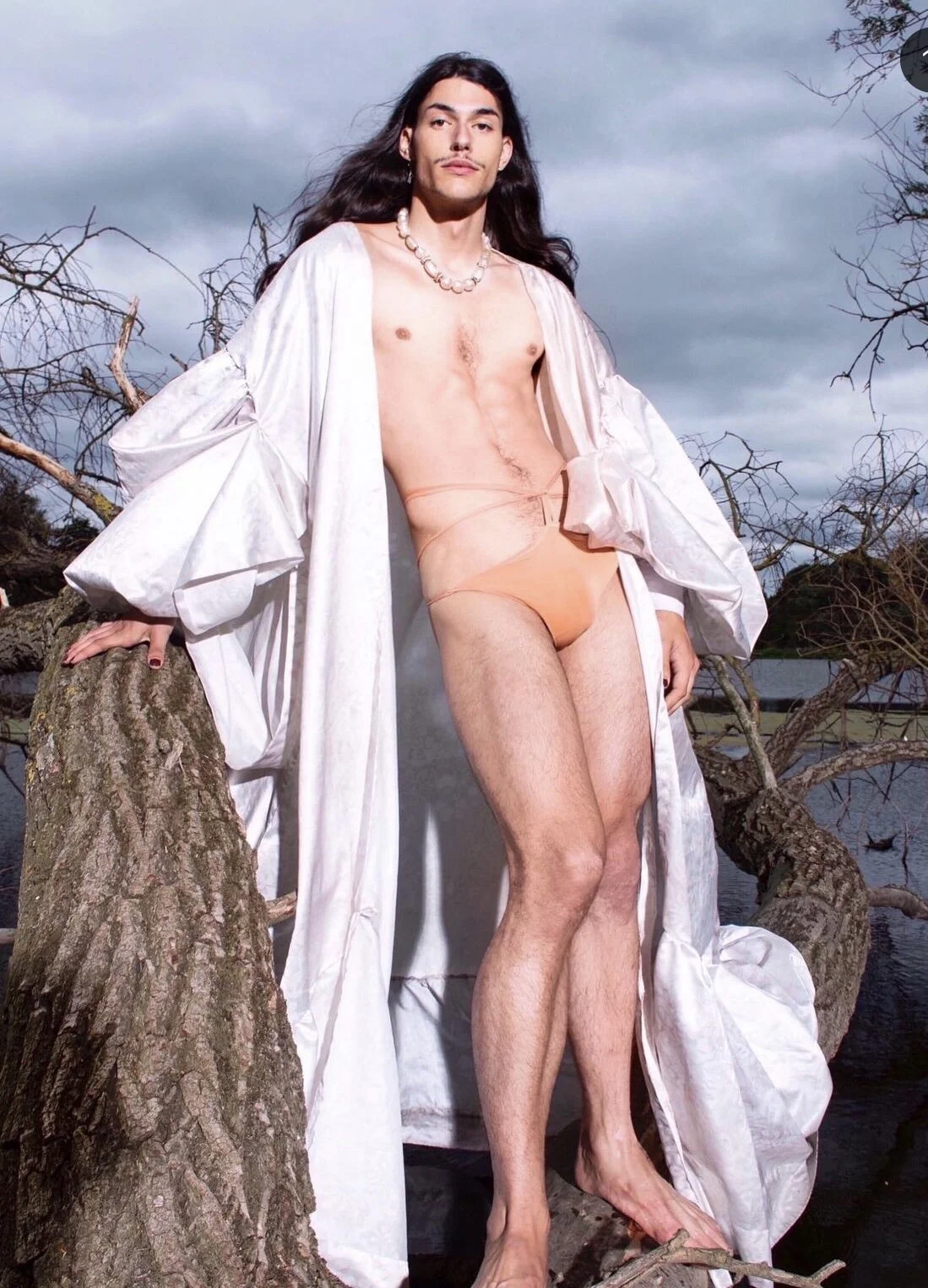
Remi Vergnanini
Rémi Vergnanini is a model and a shoe and costume designer and maker born in Liege. After studying at the Haute Ecole Libre Mosanne (HELMO) in textile design, Rémi collaborated on many projects as both assistant and head costume designer for collections and performances.
Model in parallel, Rémi models for photoshoots where the notions of identity and gender are questioned which allowed him to not be an outcast, but help design one's own concept of masculinity.
What has inspired you to get into arts and modeling ?
The artistic field seemed obvious to me at a very young age without really realizing my reasons. My hobbies as a teenager were making models, designing furniture, painting sometimes. I got this need to craft, to make something up by diverse mediums, mainly visuals. This creative output would feed me and encourage my multifaceted artistic expression hence my fascination for craftsmanship.
Thus when I got confronted as a teenager with professional ambitions, it came naturally that I would get enrolled in the artistic field.
As a model, I remember being observed and defined as very androgynous from a very young age; because of this curiosity that people felt towards me, I understood that because of my physique, I could consciously and unconsciously challenge the boundaries of gender and male body representation, and be offered a space to question this spectrum.
And without taking the position of an activist about it, I just realize that the artists (photographers, stylists, hair stylists, makeup artists) who helped explore this issue by working with me, have highlighted this intersectionality and the layers of what it means to be a man among a society where a certain vision of the man remains a propaganda.
So modeling was a tremendous playground to question my identity and work it into a performative dimension for me. How can I correlate my physicality, appearance, and identity with various artistic concepts and narratives? This quest for identity and representativeness has become research material over the years and the life experiences I have been through.
Beyond those questions and opportunities to explore it, modeling brought me to meet different artists that came up with strong relation to aestheticism which has always been one of my deepest interests.
Did you have any influential role models (if so, who ?).
Growing up in the XXI century, my generation has access to social media, the internet and has grown up in a way with it. I have been exposed to so many profiles and life experiences that have strongly and profoundly impacted me, becoming for some my greatest inspiration and for others role models for what they represent/stand for.
I could not answer this question without mentioning Palomo Spain, Harris Reed, Javier de la Blanca who are creative directors and stylists who work on the fluidity of gender and their perfect takedown of sartorial « norms ». Artistically speaking, they convey through their message carried in their collection a real desire for change, and little by little they are changing what is happening in the streets, but also in men's wardrobes for those who want to evoke and reflect on a less codified definition of what it is to look like a man.
I was particularly inspired by the work of Michaela Stark, who is also a stylist and explores the issue of body acceptance by prescribing beauty standards for women.
A few years ago, I fell in love with the artist Nadia Lee Cohen, an American photographer/director whose disturbing, aesthetic universe radically opposes the censorship of the body and promotes this sexual freedom through the representation of the body.
I was particularly moved by Raya Martigny, a transgender, racialized woman who models and carries such a strong message about the importance of inclusivity in the field of fashion that wants to represent our society, change it but also fantasize about it.
By collaborating with a model like Raya, the fashion world is encouraging an entire community to consider the opportunity to enter the field of fashion without giving in to the shackles of the patriarchal society we still live in.
And of course, I consider Arca and Sophie as my main influences, for their aesthetics, their representation, their words to the new generation, mine.
And even though I'm not transgender, I am aware of how transgender artists have been influential. Their struggles and freedoms are a real-life inspiration to me, which is also why I wanted to quote them. Giving this space you gave me to talk about these artists who are bold, brave and intelligent activists who desire an egalitarian, inclusive world where difference is celebrated and is a reason for singularity and care.
What is your creative process and what are the most important things you keep in mind when beginning a new project?
Several methodologies come into play depending on the project I am working on. Some photographers I work for arrive with a precise artistic direction and already have a concrete idea of what the photo will look like. I arrive on the shoot, and document by the artist in question his intentions and how I can physicalize their concept.
Being currently in a relationship with a dancer, I am becoming more and more familiar with the relationship between body, intentions and expressions. Some of the photographers I have collaborated with use mainly analogue photography, which is one of the most difficult things, the shots are counted on the fingers of one hand. The technical requirements are much more complex than with digitals. The poses are frozen like sculptures ready to be carved.
Other photoshoots in which I participate are very instinctive, some photographers contact you because they like what you already represent and want to invite you to create your own narrative on the spot. This can be an extreme freedom but also a constraint, how to establish a dramaturgy that will be meaningful and understandable enough for the camera. How to understand and play with the space you are in and its scenographic elements.
When it comes to posing or walking the runway for fashion designers, it is always more complex to pose because it is primarily about promoting the outfit and the garment. So the visuals put you in the picture so that you can highlight the ease and comfort of wearing an outfit, understand the narrative of the outfit and balance it with your posture, your appropriation of the garment. It can be really joyful but it’s more responsibilities.
What connects these different examples is the main desire to collaborate with the artist in question, to interact with their team. A photoshoot can be simple for a model, the work is almost finished when he/she/they arrive but a photoshoot can hide dozens of hours for scenography and hundreds of hours for an outfit. It is thus necessary to respect the work that each one made, and to develop it to make the visual representative of all the team.
How did you cultivate the calm confidence you portray behind the lens?
In front of the camera, you have to combine a degree of calm, eccentricity, confidence, but also humility. And as I mentioned in the previous question, it is also about respecting the work of the team and the intention of the artist. Everyone can take a selfie, but to deep in an artistic vision requires focus and concentration.

